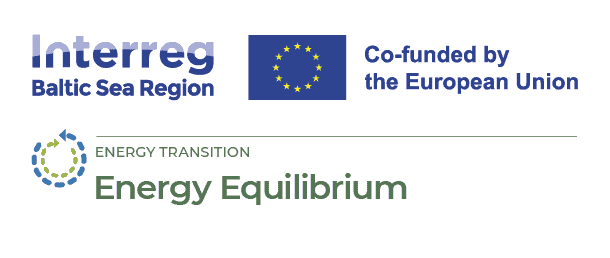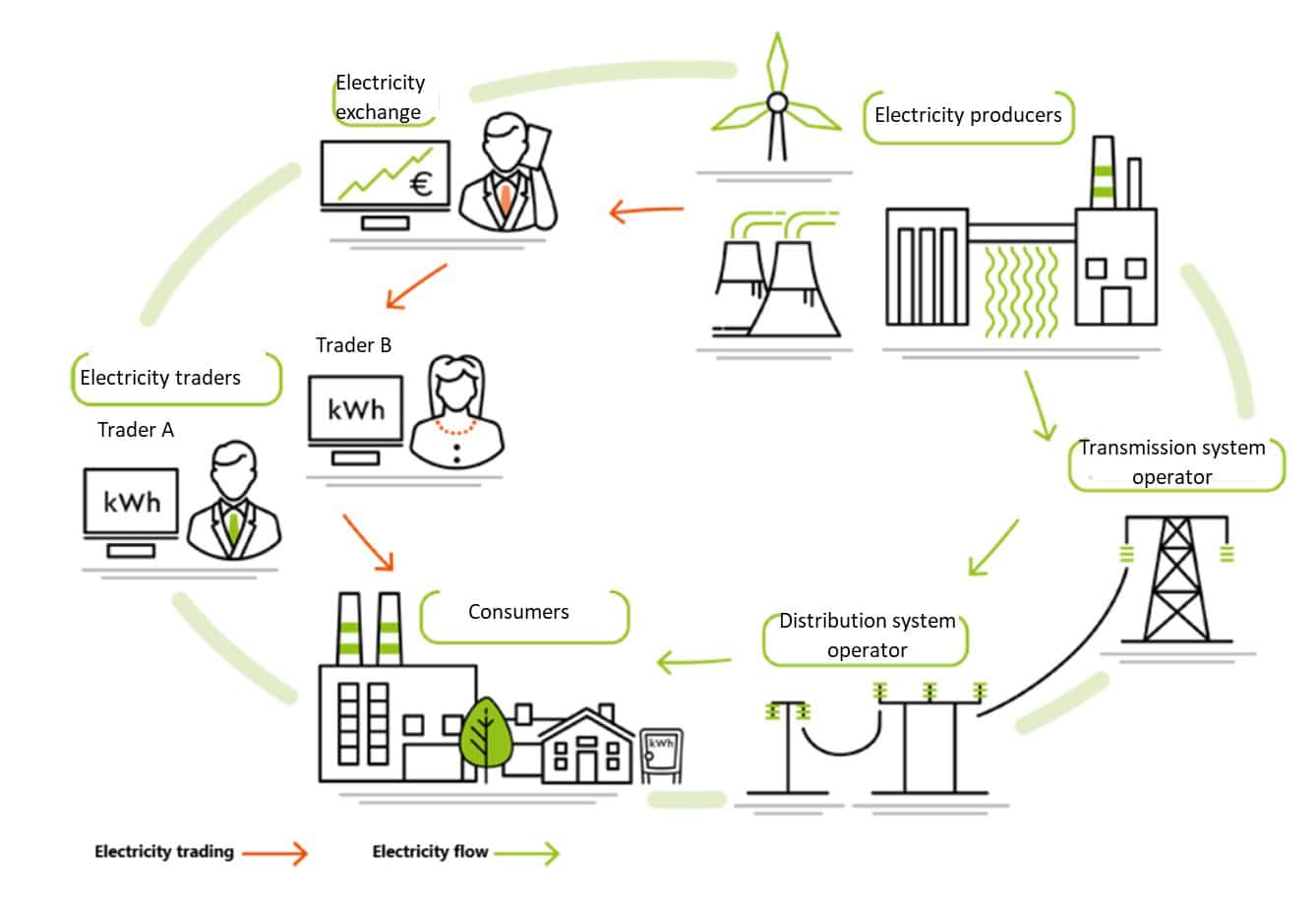
Energy infrastructure in Latvia
26 October 2024
Development to date
Latvia’s energy system is largely based on renewable resources, primarily hydropower from the Daugava River, supplemented by wind, solar, and biomass. While natural gas imports cover energy shortages, the country aims to increase wind and solar energy capacity, with significant progress already made in 2022.
Country is connected to European and Baltic energy networks, making import and export of electricity possible. In cities, biomass fuels district heating, while rural areas often rely on wood, coal, or gas.

Fig. 1. Electricity generated (MWh) by types of renewable energy sources (2017–2022)
Latvia is committed to increasing renewables and energy efficiency to meet EU climate goals. The National Energy and Climate Plan (NECP) outlines plans to modernize the grid, expand energy storage, and develop more wind and solar capacity to hit higher renewable energy targets by 2030.

Fig.2. Smart Energy System
Latvia’s renewable energy capacity has expanded significantly, led by the Daugava hydroelectric power stations as the main electricity source. In 2022, wind power capacity nearly doubled to 136 MW with the launch of a new wind farm. Solar energy capacity also saw a sharp increase, driven by heightened interest in energy independence and supported by state incentives for household solar installations. Figure 3 highlights these advancements, showcasing Latvia’s progress toward a resilient, renewable-powered future.

Fig.3. Latvia’s renewable energy generation capacities from 2017 to 2022
However, generation capacities for wind and solar power, are currently very small. Until now, Latvia has relied on electricity generated by hydroelectric power plants (HPPs), and the country’s overall policy also included the development of thermal power plants (TPPs), as natural gas was a relatively cheap resource. As is known, electricity consumption increases every year, hence the consideration of additional power capacity is necessary. In this regard, considering the climate neutrality goals, additional generation capacity can be obtained from renewable energy sources (RES).

Fig.4. Total electricity generated in Latvia, from renewable energy sources, and total electricity consumption (2017–2022), MWh
The graph in Figure 4 shows that approximately half of the electricity Latvia needs can be provided by RES, with additional volumes generated by TPPs, and the remaining difference imported. On average, depending on the season, which greatly affects electricity generation from renewable energy sources, approximately 40 to 50 % of the total required electricity in Latvia is generated from RES.
Organisation of electricity grid
Managed by Augstsprieguma tīkls (AST), Latvia’s electricity network has 1,346 km of 330 kV lines and 3,893 km of 110 kV lines, with projects like a third link to Estonia and synchronization with EU grids underway. Energy storage, especially with BESS projects, and interest in hydrogen and Power-to-X are on the rise. Latvia is also exploring biomethane, aiming to integrate it into the national gas system by 2025.
In line with the energy system development trends in Latvia and neighboring countries, the TSO evaluates and makes decisions regarding the development of Latvia’s transmission system interconnections and the need for internal network strengthening and modernization. The electricity transmission network is being developed according to Latvia’s Transmission System Development Plan and the European Ten-Year Network Development Plan.
Between 2020 and 2029, the following projects will be implemented to develop the Latvian and Baltic electricity networks:
- Third electricity interconnection between Latvia and Estonia;
- Transmission line connection “Riga TEC-2 – Riga HPP”;
- Reconstruction of the existing 330 kV interconnections between Estonia and Latvia;
- Synchronization of the Baltic states with the European electricity grids and desynchronization from the Russian unified energy system.
The electricity grid in Latvia, however, is primarily managed by Sadales tīkls, the largest distribution system operator that serves 99% of the country’s territory.
Stakeholders active in electricity storage
Both public and private energy companies, such as AST and Latvenergo, participate in the sector. Independent renewable energy producers are considering different ways to add energy storage to solar and wind generation.
Local authorities support decentralized renewable energy and energy storage projects, helping communities achieve greater energy independence. Municipalities take charge of the planning and permitting processes for renewable energy and storage initiatives along with collaboration with private companies to set up small-scale energy storage systems within communities.
There are several companies in Latvia which sell electricity to market participants. In 2021, five largest electricity traders in the whole retail market by volume were JSC “Latvenergo”, JSC “Enefit”, JSC “Ignitis Latvija”, JSC “Tet” and JSC “AJ Power”.
The Latvian transmission system operator, JSC “Augstsprieguma tīkls,” (AST) has signed agreements with 12 wind and solar power developers to connect renewable energy projects with a total capacity of over 1,100 megawatts (MW) to the transmission network. This exceeds the current installed solar and wind power capacity in Latvia by more than 150%. Overall, eight power stations are expected to be connected to the transmission network next year, with the remaining four scheduled for 2026.
AST has also started a cooperation with the German company Rolls-Royce Solutions GmbH (Rolls-Royce) on the construction of Battery Energy Storage Systems (BESS. Rolls-Royce will install the battery system at the AST substations in Rezekne and Tume with a total capacity of 80 MW and a storage capacity of 160 MWh, currently one of the most powerful and largest battery systems in the European Union.

Fig.6. Interaction between electricity producers, traders and consumers
Role of hydrogen and power-to-X in today’s energy (electricity) system
Power-to-X refers to the process of converting electricity into other energy forms, such as hydrogen or methane, for use in various applications. In Latvia, both hydrogen and Power-to-X technologies are still in their early development stages within the energy system. However, they are regarded as vital for future energy transition strategies.
Hydrogen
To contribute to achieving climate and energy goals, Latvia is also exploring the potential of hydrogen. With applications across transport and electricity, hydrogen is gaining traction, due to the extensive use of biomass Latvia may also support the production of biomass-derived hydrogen.
The state-owned utility JSC “Latvenergo” is leading efforts to develop renewable hydrogen, leveraging local resources such as hydropower, solar, and planned wind facilities. Forecasts from a 2022 study, conducted with the Latvian Hydrogen Association, suggest hydrogen consumption could rise from 2 TWh in 2030 to nearly 37 TWh by 2050, underscoring the fuel’s future role in Latvia’s energy landscape.
Associations such as the Latvian Hydrogen Association and “H2 energokopiena” are also driving public-private partnerships to expand hydrogen use, marking a significant step in Latvia’s transition toward a green hydrogen economy.
Organisation of other storage
There is a growing interest in developing biomethane storage solutions to ensure a reliable supply during peak demand periods. Latvia has a comprehensive district heating system, especially in urban areas, where thermal storage is crucial for managing heating needs.
Heat
Heat storage development in Latvia relies significantly on local government decisions. Local governments can define heat supply goals within their administrative boundaries and set binding regulations that consider environmental protection, cultural preservation, local energy resource use, and long-term cost efficiency.
Land use regulations add another layer, as each municipality is responsible for crafting a Sustainable Development Strategy, which includes designating land for infrastructure improvements. This planning framework means that while local authorities have flexibility in supporting heat storage projects, the overall approach depends heavily on individual municipal priorities and resources.
Biomethane
Over the next three years, Latvia will start producing and selling biomethane locally, which Latvijas Gāze plans to feed into the country’s gas network. One of the main projects is a new biomethane plant, set to open in late 2025, developed by energy company Virši-A with support from the European Energy Efficiency Fund. This plant will turn farm manure into biomethane, creating enough to replace up to 5.6 million cubic meters of natural gas each year.
To enhance energy security, the Latvian government has allocated €134.4 million through the REPowerEU Recovery Fund for energy investments, with €1.5 million dedicated to establishing the country’s first regional biomethane injection point in Džūkste. The Conexus Baltic Grid is also helping by creating a smart system that lets biomethane producers in remote areas compress and transport the gas in mobile containers, making it easier to add to the main network.
While progress is evident, particularly in expanding renewables and exploring new technologies like hydrogen and biomethane, significant hurdles remain—limited wind and solar capacity, the costs of emerging technologies, and dependence on natural gas underscore the complexity of the transition. Municipal and national initiatives are helping to drive change, but real progress will require sustained investment, adaptation to seasonal energy needs, and a focus on balancing new and traditional energy sources.
This article was prepared and published by Laura Kristiāna Vičmane.





